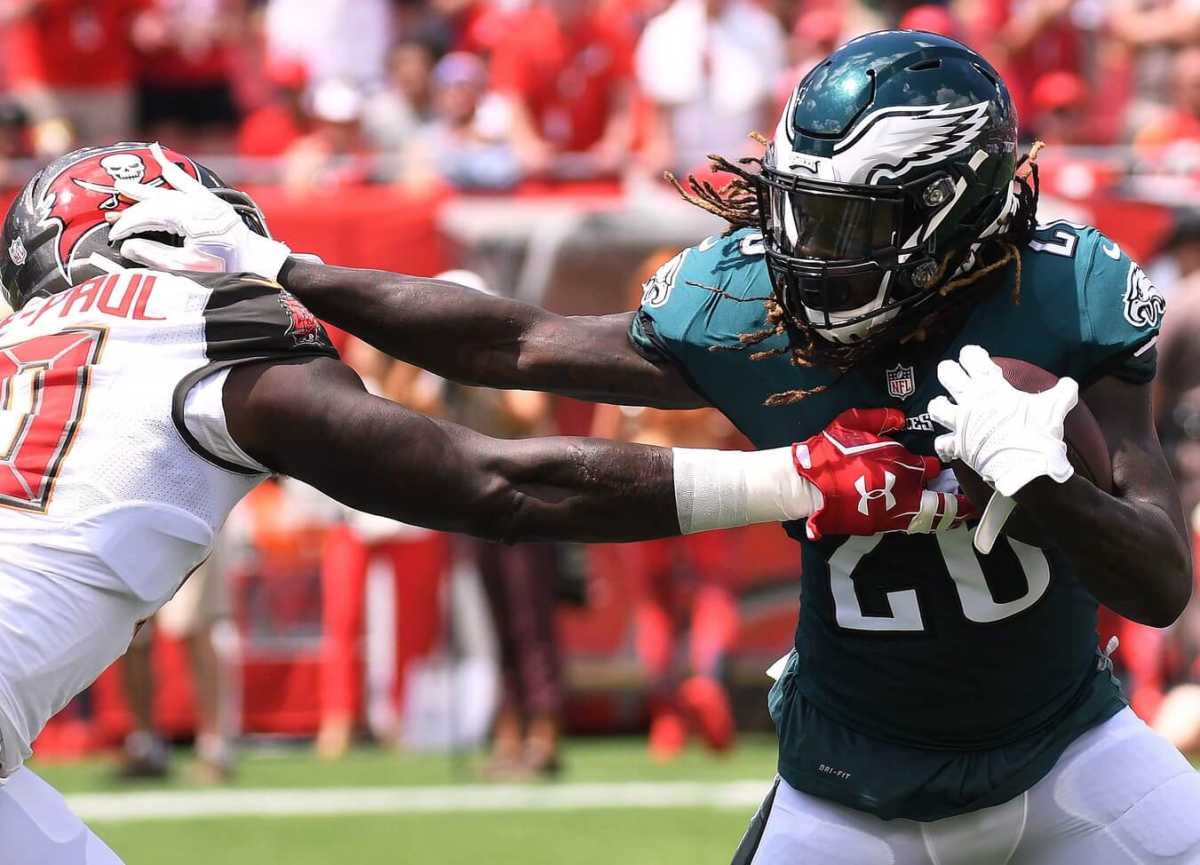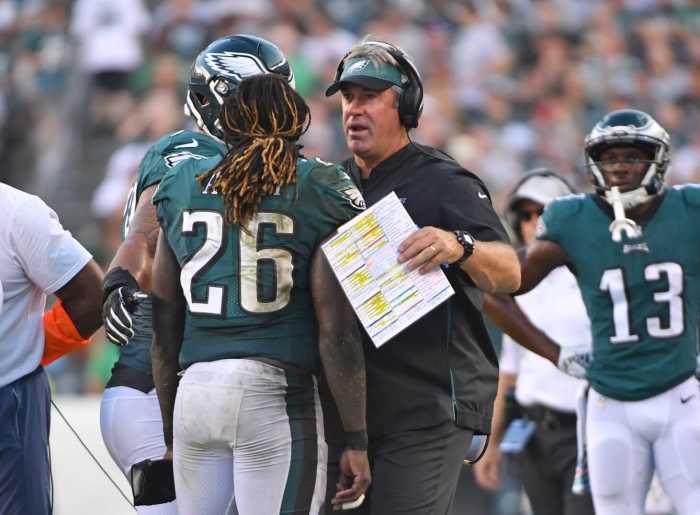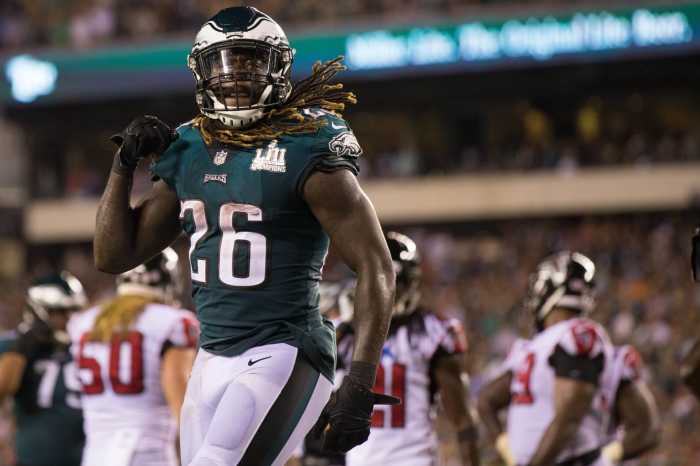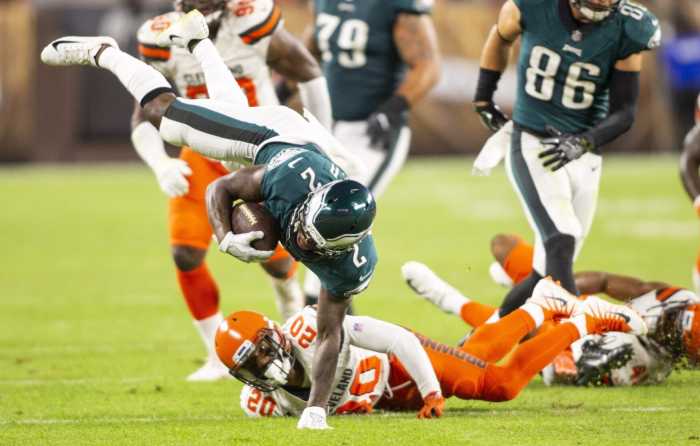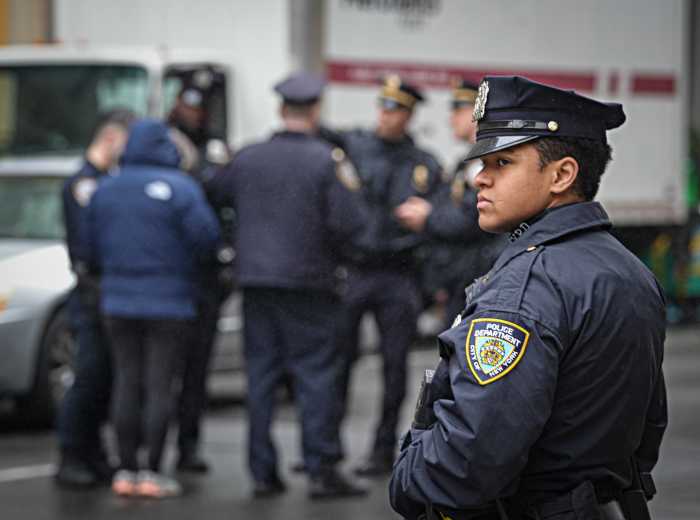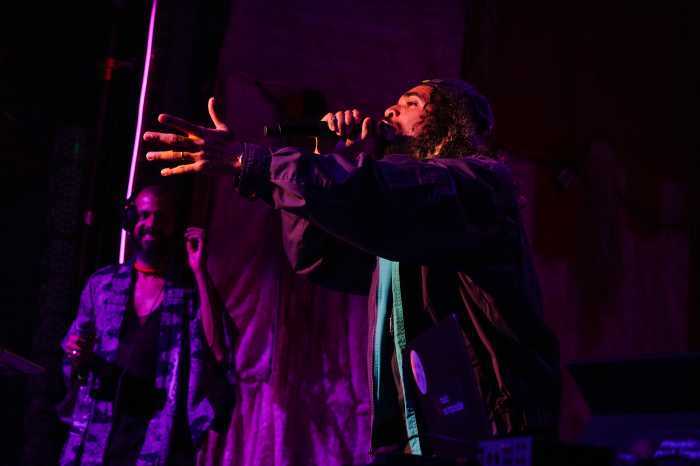Even with all those carries coming from under center, Scott faces a loaded box only 17.4% of the time. Opponents are willing to line up with a light front and still feel they can contain the smaller back. So far, they have been correct, with Scott averaging only 3.8 yards per carry against a light front, which he faces 52.3% of the time. Against the same front, Ajayi averaged 5.8 ypc in 2017 and 4.2 in 2018. Moreover, Ajayi has commanded a base defense (with 7 defenders in the box) around 43% of the time over the last two years. Forcing a third linebacker on to the field in particular situations is essential to the Eagles offense, who love to run pass plays from 12 personal and heavy-set looks.
Thus, it’s likely that when Howard returns, Ajayi is used to keep him fresh and will undertake some early-down carries and short-yardage situations. Passing downs will still likely remain in the hands of Miles Sanders, with Jordan Howard’s incredible pass blocking giving him the edge over Ajayi for second fiddle.
Using this rubric, the Eagles will also be able to keep Ajayi fresh. Something that he has in his bag of tricks over Howard is the ability to break runs for long gains. This is something that has been sorely missing from the Eagles offense. Miles Sanders seems to be the only player on the offense that can generate any play of 25 yards or longer.
Howard’s longest run of his career came in his rookie season when he scampered for 69 yards. Including that run, he has just 11 games with runs of 25+ yards in his career, six of which came in his rookie year. Ajayi, on the other hand, had a penchant for long runs in Miami and appropriately marked his landing in Philly with a 46-yard touchdown in his first game with the team. The hope is that he will be able to replicate those long runs on fresh legs.
Finally, the point should be made that as the cold weather starts rolling in and playoff positions become more cemented, there’s no such thing as too many talented RBs. The Eagles had their best season with three starting-caliber runners on the team and ran opponents into the ground in blistering weather at the Linc. Preparing for a late push for the NFC East title, the Birds will have to replicate their ground and pound dominance in 2019. Here’s hoping the play calling will follow suit.
2020 and Beyond . . .
So, for at least the rest of this season, Ajayi and Howard should be able to coexist. But what about the future?
Unbeknown to most of us, hidden in Jay Ajayi’s contract details was a clue. While exact numbers are still trickling through the grapevine, a simple, yet informative clause was found in the fine print.
On the surface, it doesn’t look good for anyone in Philly that purchased a Jordan Howard jersey. However, a potential Jay Ajayi extension shouldn’t actually impose a threat on Howard’s future with the Eagles. What it will do is put a cap on the amount the front office is willing to spend to keep him in Philadelphia. In previous articles, I’ve estimated Howard could ask for a similar contract to Atlanta’s Devonta Freeman, netting him around $8M/year. That number may now be capped closer to $6M/year in Howie Roseman’s eyes. The final number may be even lower knowing the Eagles front office’s distaste for spending on backs.
It also means that, even with the capital spent on Miles Sanders, the Eagles will be rolling with a runningback-by-committee approach for the foreseeable future. That doesn’t mean that the second RB spot will be taken by Ajayi. In fact, it may give a little traction to Howard staying in Philly — for the right price of course. Howie knows they will need a bigger back to help carry the load as Sanders gets more accustomed to the NFL run game and for now the best candidate is Jordan Howard.
Mandatory Credit: Jonathan Dyer-USA TODAY Sports

